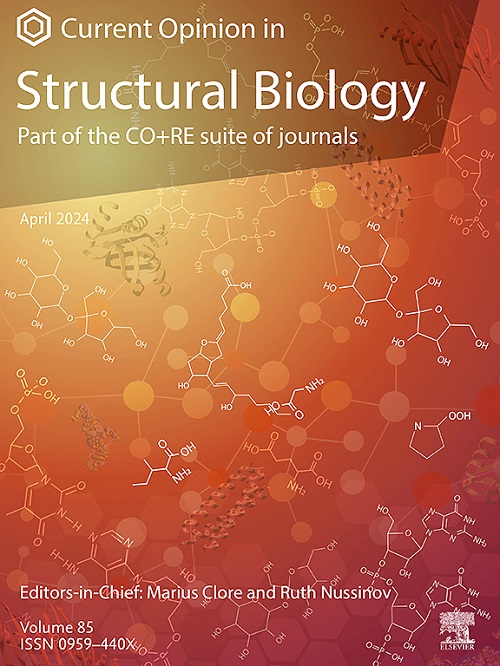功能亚态连接构象景观和蛋白质进化
IF 6.1
2区 生物学
Q1 BIOCHEMISTRY & MOLECULAR BIOLOGY
引用次数: 0
摘要
蛋白质固有的构象灵活性创造了结构的异质性,在能量景观中产生了构象集成。当构象集合体包含不同的功能亚态时,突变可以重塑构象景观,从而改变功能亚态的分布并驱动新功能的进化。在这篇综述中,我们提供了一个概念框架,阐明了功能子状态的重要性以及进化如何选择它们。我们重点介绍了发现功能亚状态的关键研究,并讨论了进化轨迹中功能亚状态转变的最新见解。最后,我们概述了研究功能亚状态的关键技术,解决了分析这些亚状态所面临的挑战,并探讨了蛋白质进化领域的未来进展。本文章由计算机程序翻译,如有差异,请以英文原文为准。
Functional sub-states link conformational landscapes and protein evolution
The intrinsic conformational flexibility of proteins creates structural heterogeneity, giving rise to conformational ensembles within the energy landscape. When conformational ensembles harbor distinct functional sub-states, mutations can reshape the conformational landscape, thereby altering the distribution of functional sub-states and driving the evolution of novel functions. In this review, we provide a conceptual framework that elucidates the importance of functional sub-states and how evolution can select them. We highlight key studies that have uncovered functional sub-states and discuss recent insights into the transitions of functional sub-states during evolutionary trajectories. Finally, we outline critical techniques for studying functional sub-states, address the challenges faced in analyzing these sub-states, and explore future advancements in the field of protein evolution.
求助全文
通过发布文献求助,成功后即可免费获取论文全文。
去求助
来源期刊

Current opinion in structural biology
生物-生化与分子生物学
CiteScore
12.20
自引率
2.90%
发文量
179
审稿时长
6-12 weeks
期刊介绍:
Current Opinion in Structural Biology (COSB) aims to stimulate scientifically grounded, interdisciplinary, multi-scale debate and exchange of ideas. It contains polished, concise and timely reviews and opinions, with particular emphasis on those articles published in the past two years. In addition to describing recent trends, the authors are encouraged to give their subjective opinion of the topics discussed.
In COSB, we help the reader by providing in a systematic manner:
1. The views of experts on current advances in their field in a clear and readable form.
2. Evaluations of the most interesting papers, annotated by experts, from the great wealth of original publications.
[...]
The subject of Structural Biology is divided into twelve themed sections, each of which is reviewed once a year. Each issue contains two sections, and the amount of space devoted to each section is related to its importance.
-Folding and Binding-
Nucleic acids and their protein complexes-
Macromolecular Machines-
Theory and Simulation-
Sequences and Topology-
New constructs and expression of proteins-
Membranes-
Engineering and Design-
Carbohydrate-protein interactions and glycosylation-
Biophysical and molecular biological methods-
Multi-protein assemblies in signalling-
Catalysis and Regulation
 求助内容:
求助内容: 应助结果提醒方式:
应助结果提醒方式:


